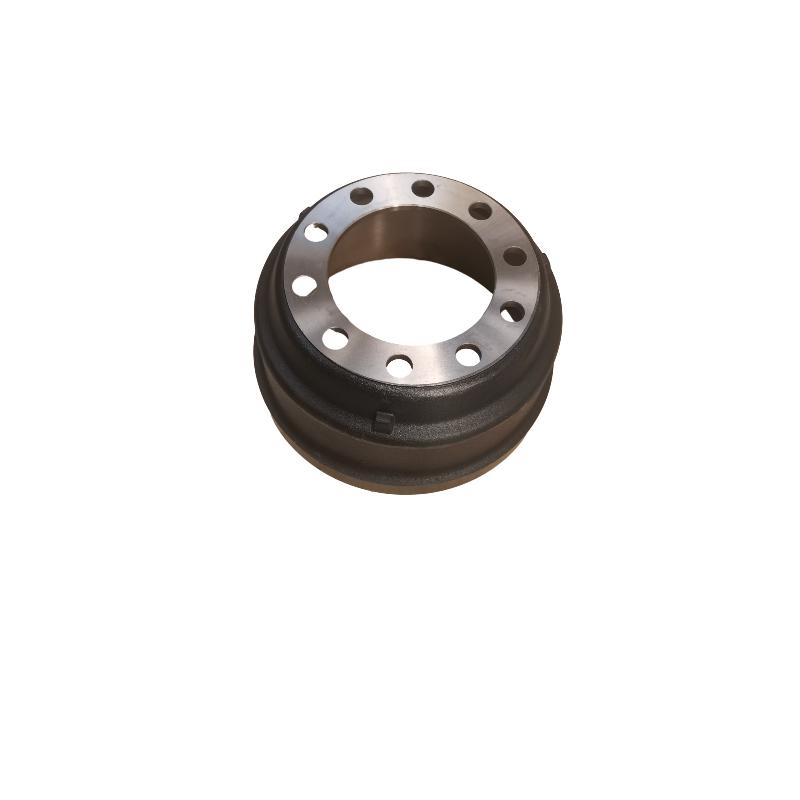Th7 . 20, 2024 02:39 Back to list
Understanding the Functionality and Mechanism of Brake Drums in Automotive Systems
How Do Brake Drums Work?
Understanding how brake drums work is essential for anyone interested in automotive mechanics or looking to maintain their vehicle's braking system. Brake drums are a critical component in many vehicles, particularly those that use drum brakes as opposed to disc brakes. This article will explain the functioning of brake drums, their components, and their importance in vehicle safety.
The Basic Functionality of Brake Drums
At its core, a brake drum is a cylindrical component that is attached to the wheel hub of a vehicle. It rotates together with the wheel and is designed to slow down or stop the vehicle when the brakes are applied. Unlike disc brakes, which use a flat disc and calipers, drum brakes utilize a different mechanism involving friction.
When the driver presses the brake pedal, hydraulic fluid is sent through the brake lines to the wheel cylinder, which is located inside the brake drum. This fluid exerts pressure on the pistons inside the wheel cylinder, causing them to extend. As the pistons move outward, they push the brake shoes against the inner surface of the brake drum.
Components of Brake Drums
1. Brake Drum This is the actual drum that spins with the wheel. It is usually made of cast iron or a durable composite material to withstand the friction and heat generated during braking.
2. Brake Shoes These are curved pieces that are lined with friction material, often made of composite material, that makes contact with the drum to create the friction needed to slow or stop the vehicle.
how do brake drums work

4. Return Spring Once the brake pedal is released, the return spring pulls the brake shoes back to their original position, away from the drum, to allow the wheel to rotate freely.
The Braking Process
When the brake pedal is pushed, the hydraulic pressure generated causes the wheel cylinder's pistons to move outward. As the pistons extend, they push the brake shoes against the inner wall of the spinning brake drum. The friction created between the brake shoes and the drum slows the rotation of the drum, which in turn slows down the wheel and brings the vehicle to a halt.
This process is often effective in providing substantial braking force, especially in larger vehicles like trucks and buses, where drum brakes are commonly used due to their ability to handle heavier loads.
Advantages and Disadvantages
Brake drums have their own sets of advantages and disadvantages. One major advantage is their capacity to generate significant braking force, especially at lower speeds. Additionally, drum brakes often require less frequent maintenance compared to disc brakes, as they are typically less exposed to environmental factors like water and dirt.
However, drum brakes are less effective in dissipating heat, which can lead to brake fade during prolonged usage. This is especially evident during steep descents or in situations requiring continuous braking. Moreover, they can be heavier than disc brakes and may not provide as responsive braking performance.
Conclusion
In summary, brake drums play a crucial role in the braking system of many vehicles. While they offer several advantages, they also come with specific limitations. Understanding how brake drums work can help drivers appreciate the importance of maintaining their braking systems for optimal safety on the road. Regular inspections and maintenance of brake components, including brake drums and shoes, are essential to ensure they function effectively and ensure the safety of both the driver and passengers.
-
Brake Drum Man - High-Quality Drum Brake Drums & Brake Shoes for Reliable Performance
NewsJun.24,2025
-
High-Quality Brake Drum Kamaz – Durable Drum Brake Drum & Brake Shoe Replacement
NewsJun.10,2025
-
High-Quality Brake Drum Liza for Drum Brake Systems - Superior Durability and Performance
NewsJun.10,2025
-
High-Quality Brake Drum Kamaz – Durable Drum Brake Drum & Brake Shoe Solutions
NewsJun.10,2025
-
Durable Kamaz Brake Drums High-Performance Truck Parts
NewsJun.09,2025
-
Premium Brake Drum Maz Kit with Shoes Enhanced Braking
NewsJun.09,2025
